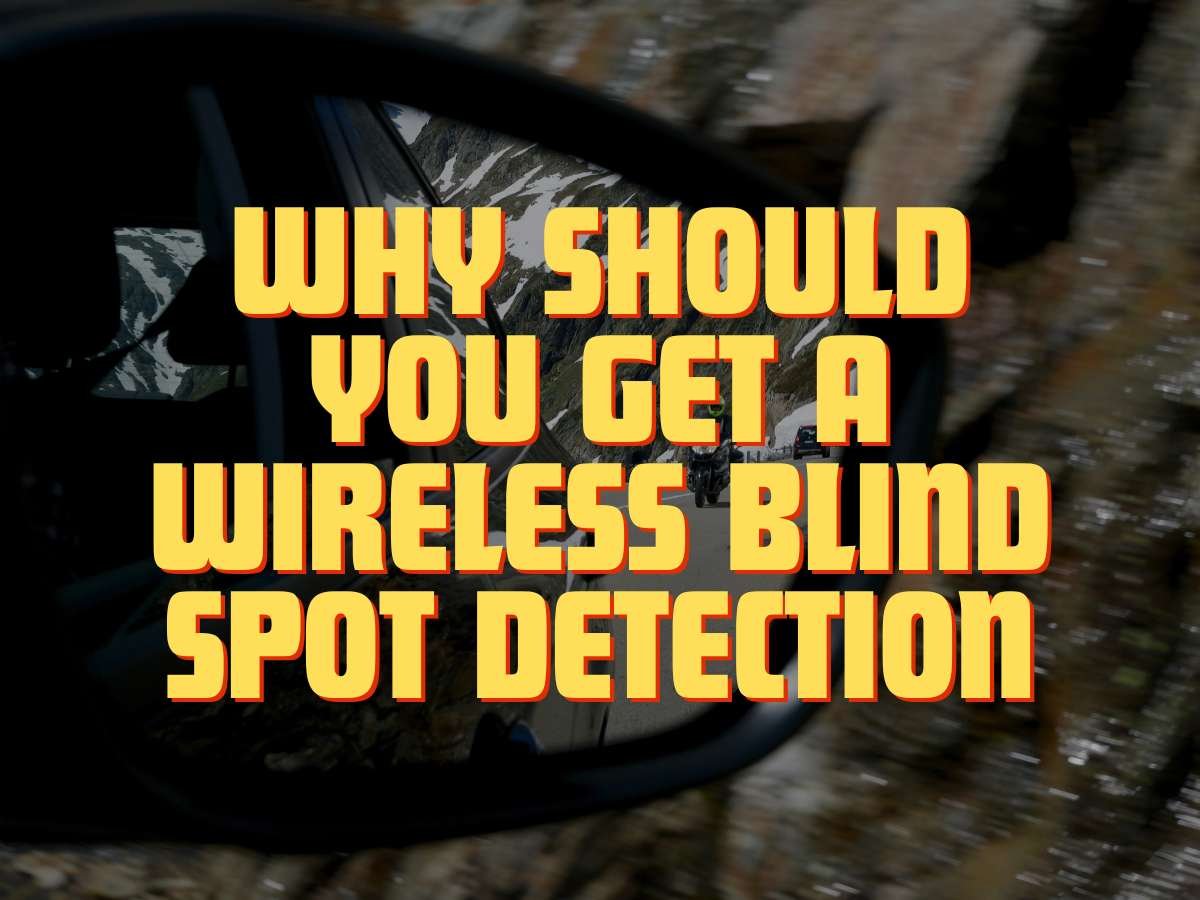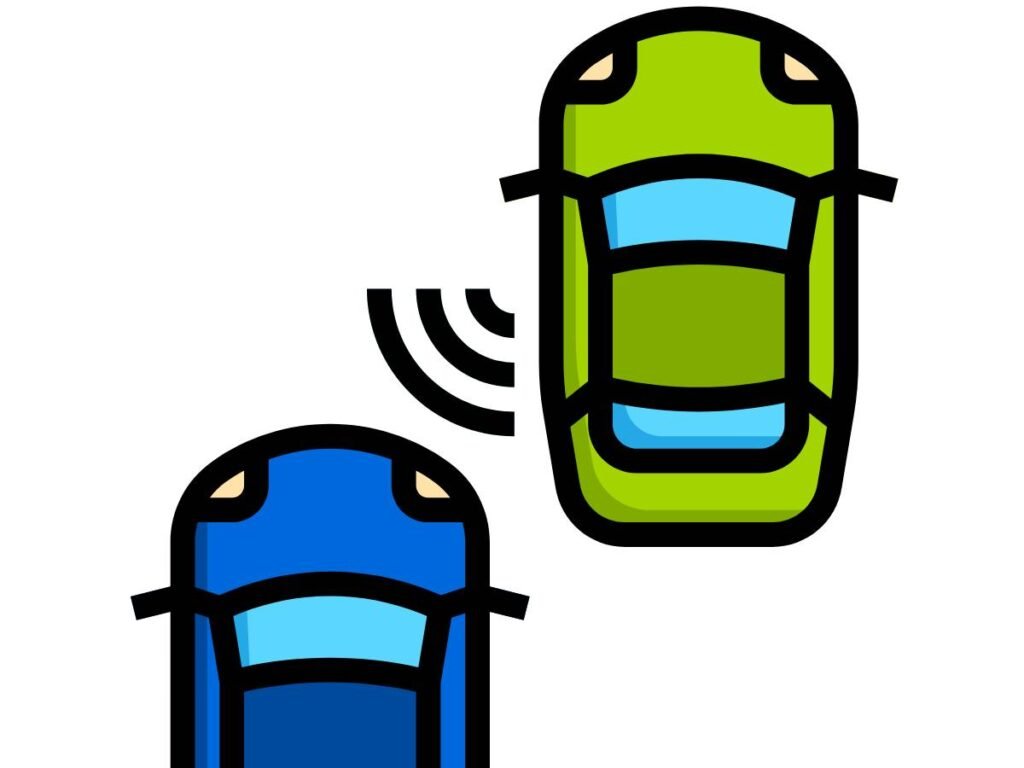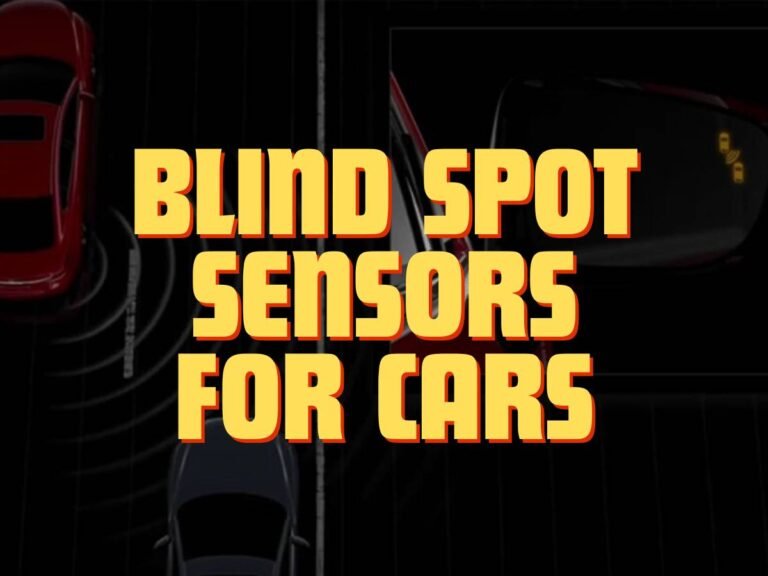Why Should You Get a Wireless Blind Spot Detection?

A wireless blind spot detection system makes installation easier. Even a newbie can install this system as it doesn’t include wires, cables, and extensions. All you need is to mount its sensors and set up the alert mechanism. Generally, these systems connect their components together wirelessly using Wi-Fi or BlueTooth.
But the primary question still remains, why should you get a car wireless blind spot detection system? What’s its main difference as compared to a wired system? Let’s find out!

All About Wireless Blind Spot Detection System
First things first, let’s start with the basic concept of blind spots and why they need a detection system.
In driving terminology, a “blind spot” refers to the areas around a vehicle that are invisible to the driver. That means these zones can not be seen via the side-view mirrors. These areas can pose significant risks, especially when changing lanes or merging. Since you might not notice other incoming vehicles, devastating collisions can occur.
Generally, Blind spots vary in size depending on various factors. That includes the vehicle type, design, and the driver’s seating position.
The Advancement of Wireless Blind Spot Detection System
Initially, blind spot detection systems were predominantly wired. The sensor’s data transmission to the display or alert system involves physical connections. This setup required extensive installation procedures that often necessitated modifications to the vehicle’s body or electrical system.
However, wireless blind spot detection systems entered the driving scene not too long ago. In wireless systems, the sensors transmit data via electromagnetic waves. Hence, you don’t need physical cables running through the vehicle.
Here are the primary benefits you get with a blind spot detection system wireless:
1. Easier Installation
Wireless systems are far less invasive to install. There is no need to remove panels or run wires through the vehicle. This factor not only simplifies installation but also reduces the risk of damaging the vehicle’s existing wiring and structural integrity.
2. Flexibility and Compatibility
Wireless systems are easily adaptable to a wide range of vehicle types. That also includes older models that were not originally equipped with such technology. The versatility makes these systems a popular aftermarket option for retrofitting.
3. Reduced Costs & Time
Without the need for extensive wiring, the installation of a wireless blind spot detection system is quicker. Furthermore, it is also comparatively cheaper than their wired counterparts since you don’t need to spend bucks on extra wires and extensions.

How to Install Wireless Blind Spot Detection System
Now, let’s discuss the installation process for the wireless blind spot detection system. The first thing to do is clean your vehicle. Also, ensure your car is dry before installing the system. Here’s everything else you need to know:
1. Install the Sensors
Most systems will have you place sensors on the rear bumper or near the rear corners of the vehicle. This step may require slightly drilling into the bumper or adhering the sensors with strong automotive-grade adhesive. The sensor-mounting step can vary depending on your system and its specifications.
2. Set Up the Control Module
The control module is the brain of the operation. It’s typically installed inside the trunk or the main body of the vehicle. Secure the module in a spot that doesn’t interfere with any existing vehicle wiring or components.
3. Sync the Components
Since the system is wireless, this generally involves ensuring all sensors and the control module are properly paired. The syncing in wireless blind spot detection systems might vary from model to model. Generally, it involves using Bluetooth or Wi-Fi connectivity.
2 Things to Consider Before Installing the Wireless Blind Spot Detection System
Always keep the following two factors in mind before buying and installing the wireless blind spot detection system:
Choose the Right System
Before purchasing, ensure the system is compatible with your vehicle make and model. Additionally, look for systems with good reviews and reliable performance. Otherwise, you might not get value for money. The system might face wear and tear in no time, resulting in further expenses.
Read the Manual Thoroughly
Each system comes with specific instructions. Familiarize yourself with the components and installation steps to ensure clarity and preparedness. Remember that the steps we mentioned in this guide might not work with your system. That’s because it is the universal installation method, not designed for any specific model.

3 Common Errors & Fixes for Wireless Blind Spot Detection System
Here are the common errors with their fixes you should know about the wireless blind spot detection system:
1. Sensor Placement
Incorrect sensor placement can lead to faulty alerts or no detection. To overcome this, always measure twice before installing. If the error persists, consider getting professional help. You can also reach out to the manufacturer of the system if they offer after-sales support in their warranty.
2. Interference Problems
Electronic interference from other devices in your car can affect the performance of a wireless blind spot detection system. Ensure there are no obstructions or interfering devices near the sensors and control module.
3. System Calibration
Getting the system to accurately detect vehicles can be tricky. Is your system not performing as expected after following the setup instructions? The most common cause could be faulty calibration. Consider contacting the manufacturer for support or professional help for proper calibration.
Conclusion
Installing a wireless blind spot detection system is an effective way to enhance your driving safety. From selecting the right system for your vehicle to overcoming common installation challenges, each step is vital in achieving optimal performance and safety benefits.
Remember, while DIY installation can be rewarding and cost-effective, professional installation offers expert handling and minimal errors. Regardless, the addition of a car wireless blind spot detection system is a proactive step towards safer driving.






